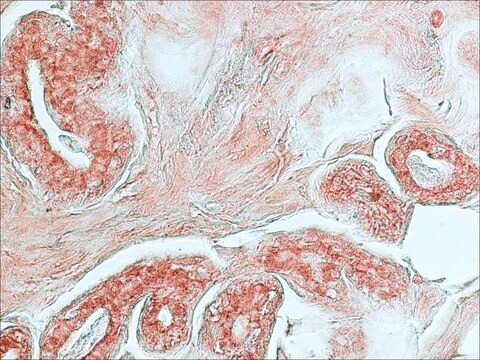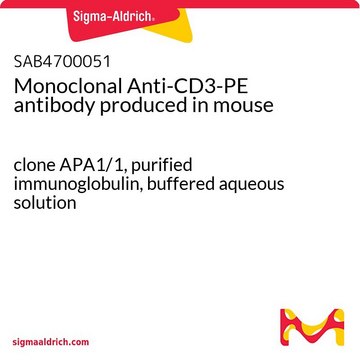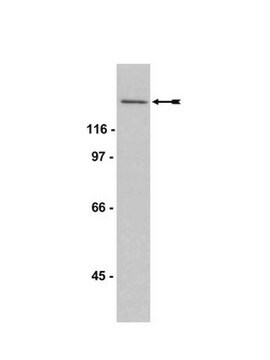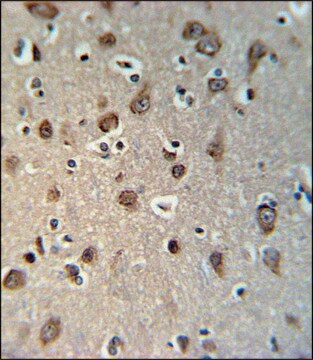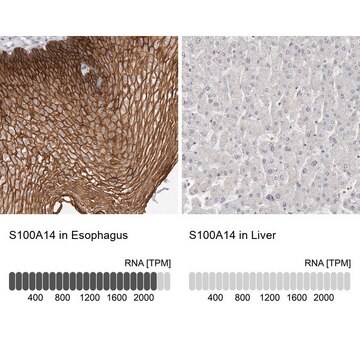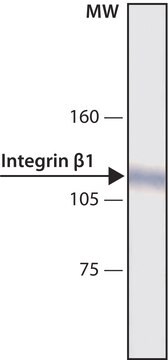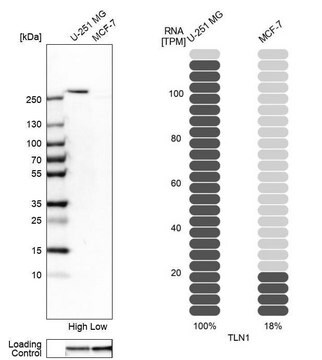MABE867
Anti-Mad1 Antibody, clone BB3-8
clone BB3-8, from mouse
Sinonimo/i:
Mitotic spindle assembly checkpoint protein MAD1, Mitotic arrest deficient 1-like protein 1, MAD1-like protein 1, Mitotic checkpoint MAD1 protein homolog, HsMAD1, hMAD1, Tax-binding protein 181
About This Item
Prodotti consigliati
Origine biologica
mouse
Livello qualitativo
Forma dell’anticorpo
purified immunoglobulin
Tipo di anticorpo
primary antibodies
Clone
BB3-8, monoclonal
Reattività contro le specie
human
tecniche
immunofluorescence: suitable
western blot: suitable
Isotipo
IgG1κ
N° accesso NCBI
N° accesso UniProt
Condizioni di spedizione
wet ice
modifica post-traduzionali bersaglio
unmodified
Informazioni sul gene
human ... MAD1L1(8379)
Descrizione generale
Immunogeno
Applicazioni
Immunoflourescence Analysis: A representative lot from an independent laboratory detected Mad1 in HeLa cells (Screpanti, E., et al. (2011). Curr Biol. 21(5):391-398.).
Western Blotting Analysis: A representative lot from an independent laboratory detected Mad1 in HeLa cell lysate (Screpanti, E., et al. (2011). Curr Biol. 21(5):391-398.).
Epigenetics & Nuclear Function
Cell Cycle, DNA Replication & Repair
Qualità
Western Blotting Analysis: 0.5 µg/mL of this antibody detected Mad1 in 10 µg of HeLa cell lysate.
Descrizione del bersaglio
Stato fisico
Stoccaggio e stabilità
Altre note
Esclusione di responsabilità
Non trovi il prodotto giusto?
Prova il nostro Motore di ricerca dei prodotti.
Codice della classe di stoccaggio
12 - Non Combustible Liquids
Classe di pericolosità dell'acqua (WGK)
WGK 1
Punto d’infiammabilità (°F)
Not applicable
Punto d’infiammabilità (°C)
Not applicable
Certificati d'analisi (COA)
Cerca il Certificati d'analisi (COA) digitando il numero di lotto/batch corrispondente. I numeri di lotto o di batch sono stampati sull'etichetta dei prodotti dopo la parola ‘Lotto’ o ‘Batch’.
Possiedi già questo prodotto?
I documenti relativi ai prodotti acquistati recentemente sono disponibili nell’Archivio dei documenti.
Il team dei nostri ricercatori vanta grande esperienza in tutte le aree della ricerca quali Life Science, scienza dei materiali, sintesi chimica, cromatografia, discipline analitiche, ecc..
Contatta l'Assistenza Tecnica.